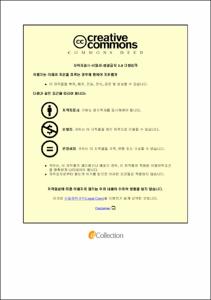김 산업의 산업적 분화가 가지는 경제적 의의와 문제점
- Abstract
- Abstract
Laver(Porphyra tenera) is consumed as food in Korea, japan and china live on rice. The origin of Korean laver farming is Gwangyang-si in Jeollanam-do Province 1650’s.
Korea has an old history concerning laver farming. in 2003, Korean laver production was 193,553 tons. in the same year, japan showed a yield difference about twice as close to 347,354 tons. However, the production of Japan 316,228 tons in 2014 and Korea surpassed Japan to 316,228 tons. In addition, export quantity of Korean laver was 6,899 tons and export amount was $45 million in 2004. But, in 2014, 15,555 tons were exported and the amount was $274 million. it shows the export volume increased 2.2 times and export amount increased 6 times over the last 10 years in korea. The laver industry of Korea has grown rapidly.
Until 1980’s fishery households in laver farming processed dry laver themselves in their house as a cottage industry. But today, laver farming and processing are separated. Korean laver industry in these days is made up of 6 levels(seeding, farming, first processing, second processing, export business). and this industrial disintegration was a driving force of Koran laver industry. Until now, the bright side of this rapid growth is focused and highlighted only. However, actually, there is a gap between the old history and the shortage of basic technology, knowledge in seeding, farming sector in Korean laver industry. In addition, there are many illegal laver farming facilities for the increase of production and the fishing ground environment is getting worse. the benefits in laver industry is not distributed to all levels fairly too. The price of farmed laver decreases steadily and stucks in lower price than dry laver. that’s why the fishery households find benefits for expanding farming area and increase production. Because added value of laver is created in processing stage not in production, many people focus on the quantity not on the quality. Therefore, for the sustainable growth and development of laver industry, must consider the problems in production stage.
The research result show us that the price of a bunch of dry laver(per 100papers) 3566.33won consist of 1,143.5won(32.1%) for processing benefit, 617.4 won(17.3%) for farming benefit. There are four components in the dry laver price. farming cost, farming benefit, processing cost, processing benefit. and among them, farming benefit has the lowest portion. it shows that the processing company gets the value of dry laver about double times than fishery households. Therefore, fishery households should find their proper level of benefits, and there is one way for this, it is self process for dry laver in fishery houses. Self dry laver processing can lead changes of the flow in korean laver industry focused on extension. China is powerful rival concerning laver production. and their growth in production can not be ignored. Korea should diversify the market and products like Japan. If fishery households can process dry laver themselves, they will have choices. to go with quantity or quality will be connected with their business performance. This can lead reduction of illegal laver farming facilities and it makes possible to control the laver production and the environment of fishing grounds also. and to make this changes successfully. Besides, Suhyup(National Federation of Fisheries Cooperatives) should exert their influence to laver industry by commissioned processing business and dry laver sale on commission. as a leader and representative of fisheries industry and fishery households, Suhyup should stabilize laver prices and support fishery households to establish the foundation for sustainable growth of laver industry.
- Issued Date
- 2016
- Awarded Date
- 2016. 2
- Type
- Dissertation
- Publisher
- 부경대학교 대학원
- Affiliation
- 부경대학교 대학원
- Department
- 대학원 해양수산경영학과
- Advisor
- 김병호
- Table Of Contents
- 목 차
제1장 서론
1. 연구 배경 및 목적
2. 선행연구 검토
3. 연구방법
제2장 김 양식업 발전 과정
1절 양식 기술의 발달과 양식의 지역적 변화
2절 양식경영의 변화
1. 경영체수의 변화
2. 양식 규모의 변화
3. 가공 및 판매에 대한 대응의 변화
제3장 김 산업의 분화 과정
1절 김 산업 분화의 배경
2절 김 산업의 분화
제4장 김 산업의 분화가 가지는 문제점 및 개선방안
1절 물김 형태의 출하가 김 양식에 미치는 부정적 영향
2절 양식 및 가공의 이익 분배 구조
1. 물김 양식 비용
2. 마른김 1차 가공 비용
3. 마른김 1속당 양식어가와 1차 가공업체의 이익
3절 양식경영에 의한 자가가공 추진
1. 일본의 사례
2. 자가가공의 추진방안
3. 수협의 역할
제5장 결론 및 제언
- Degree
- Master
- Files in This Item:
-
-
Download
 김 산업의 산업적 분화가 가지는 경제적 의의와 문제점.pdf
기타 데이터 / 3.7 MB / Adobe PDF
김 산업의 산업적 분화가 가지는 경제적 의의와 문제점.pdf
기타 데이터 / 3.7 MB / Adobe PDF
-
Items in Repository are protected by copyright, with all rights reserved, unless otherwise indicated.